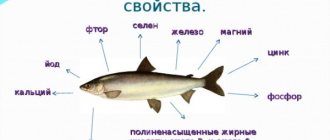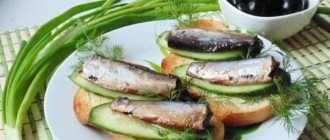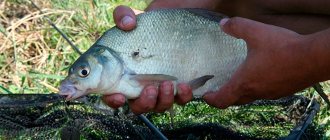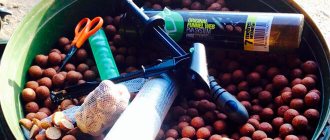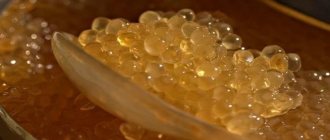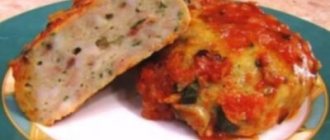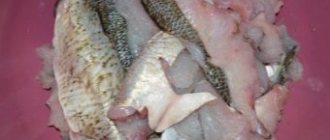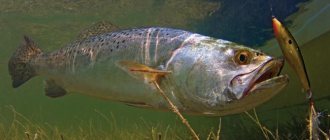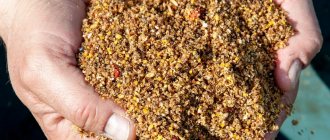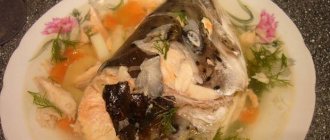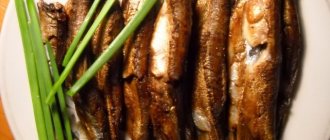Recipes for making molasses
Molasses (maltodextrin, dextrin maltose) is used in the canning and confectionery industries.
In particular, it is used in the manufacture of certain types of bread and gingerbread. Some of its types are used for the production of frozen desserts and ice cream in order to lower the freezing point of products. In the food industry, molasses is produced in two ways. The first method is to prepare it from starch (potato, corn) by saccharification (hydrolysis). In the second way, molasses is made from the juice of berries and vegetables (fruits containing large amounts of sugary substances). For this purpose, apples, pears, currants, gooseberries, grapes, etc. are used. All about sugar. Watch the video.
Fruit molasses
How to prepare fruit molasses:
Wash the berries or fruits and extract the juice using a juicer. Strain the juice through cheesecloth into a saucepan and simmer over low heat until it thickens.
Stir it occasionally with a wooden spatula. The finished molasses should have a dark yellow color.
Pomegranate molasses
It has a sour taste and a beautiful dark color. It can be used not only in baking, but also added to salad dressings.
How to make pomegranate molasses:
Pour the juice into a saucepan and place over low heat. When it boils, add sugar, stir and cook until the volume of liquid is reduced by four.
At the end of cooking, add lemon juice to the molasses.
Honey molasses
How to prepare honey molasses:
Mix all the ingredients in a saucepan and cook the mixture over low heat until the sugar melts. Bring it to a boil and let it cook for 5-7 minutes.
Remove molasses from heat and cool.
Golden syrup
How to prepare light molasses:
Place sugar in a bowl or saucepan, add water and place over low heat until the sugar dissolves.
Let the mixture simmer over low heat for 5 minutes.
All the secrets of honey. Watch the video!
Light lemon molasses
How to make light lemon molasses:
Boil water, add granulated sugar to it, bring to a boil. As soon as it boils, add citric acid, cover the pan with a lid and leave on low heat for 45 minutes.
Stir the molasses from time to time. Cool the finished product, add baking soda diluted with water in a small amount.
Stir the molasses thoroughly until it foams a lot. Foaming will stop after 15 minutes.
If foam remains, remove it from the surface with a spoon. Pour the molasses into a glass container and store it in the refrigerator or use it for baking.
Fruit molasses: national characteristics of preparation
In different countries, depending on what fruits are used in the production of molasses, it is called differently. So, in Turkey, pekmez is made from grapes, mulberries and carob. In Crimea, grape, apricot and date molasses are called bekmez if it is thick, and ekshi if it is thinner. Of course, sugar syrup can be made from other fruits and berries, the main thing is that they must be juicy.
It is worth considering that fruits are boiled down 10 times: 10 kg of grapes will yield 1 liter of pekmez
For 1 glass of fruit molasses you will need: - 2 kg of fruits or berries; - 0.5 liters of water.
Squeeze juice from well-washed fruits or berries. Place the remaining pulp in a bag and press down with heavy pressure. This is done in order to squeeze out the remaining juice. Strain the fruit mixture through a sieve, pour into a saucepan and cook over low heat. Stir the juice periodically with a wooden spatula. You need to cook the molasses until it darkens and has a thick consistency.
In addition to being used in cooking and baking, pekmez is also used in regular food. Molasses is added to yogurt, porridge, and poured over sandwiches. In addition, black grape pekmez increases hemoglobin well. Doctors recommend giving it even to eight-month-old babies.
Molasses is a secondary product of processing corn, sugar beets or cane to produce granulated sugar. Many people underestimate molasses as a product. Nevertheless, not a single confectionery or bakery production can do without it. Often molasses is required even for making homemade baked goods, not to mention on an industrial scale.
But not everyone knows where molasses is used, what it is and how it is obtained. The following describes the main types of molasses, and briefly the technology of its production.
Molasses - recipe
Molasses is a liquid sweet syrup that is often used in confectionery. The beauty and main difference between molasses and sugar is that the syrup does not crystallize and therefore products with it remain fresh and soft longer. In addition, baked goods prepared using molasses acquire a special taste.
You can’t buy this ingredient in every store, so it’s easier to prepare molasses at home.
How to prepare molasses?
- sugar – 350 g;
- water – 150 ml;
- citric acid – 2 g;
- baking soda – 1.5 g.
Boil water in a saucepan as it needs to be hot for the recipe. Dissolve sugar in it and, stirring constantly, bring to a boil. Then add citric acid to the syrup, cover the pan with a lid and cook over low heat for 45 minutes. Cool the finished syrup a little. Add a little water to the baking soda, stir, then transfer the mixture to the cooled liquid and mix everything again.
The mixture will begin to foam strongly, leave it to infuse for 10-15 minutes. Once the foaming has stopped, your molasses is ready to use. If a little foam remains on the surface, simply remove it with a spoon. The finished syrup can be stored in a glass container in the refrigerator.
Sweet molasses
Most often, molasses is made from brown or black sugar (molasses), which is why it is also called dark molasses. According to the recipe we have proposed, you will need no more than 10 minutes to prepare it.
- brown sugar or molasses - 5 tbsp. spoon;
- water – 1-2 tbsp. spoons.
Place brown sugar in a saucepan, add water and cook the syrup over low heat, stirring constantly, until the sugar has completely melted. After this, bring the liquid to a boil, let it simmer for 3-5 minutes and remove from heat. Leave the molasses to cool at room temperature and then use for baking.
Light molasses at home
Some recipes contain an ingredient such as light molasses, which, like dark molasses, can be prepared at home. We will tell you how to make light molasses, for which you will need regular white sugar instead of brown sugar.
- regular sugar - 7 tbsp. spoon;
- water – 3 tbsp. spoons.
Pour sugar into a saucepan or bowl, add water and heat until the sugar is completely dissolved. Place the syrup on the stove and let it simmer over low heat for about 5 minutes. Turn off the heat, let the syrup cool and then use as directed.
Honey molasses
Making honey molasses at home is not a big problem, and the syrup turns out quite thick and viscous.
- brown sugar - 3 tbsp. spoons;
- honey - 3 tbsp. spoons;
- water – 1 tbsp. spoon.
Combine all ingredients in a bowl and simmer over low heat until the sugar melts. Then bring the syrup to a boil and let it simmer for about 5-7 minutes. Remove the honey molasses from the heat and let it cool.
In accordance with Article 112 of the Labor Code of the Russian Federation
(Collection of Legislation of the Russian Federation, 2002, No. 1, Art. 3)
Non-working holidays in the Russian Federation are:
January 1, 2, 3, 4 and 5
— New Year holidays;
January 7
—Christmas Day;
February 23
- Defender of the Fatherland Day;
March 8
- International Women's Day;
May 1
- Spring and Labor Day;
May 9
- Victory Day;
June 12
—Russia Day;
November 4
is National Unity Day.
If a weekend/non-working day coincides with a holiday, the day off is transferred to the next working day after the holiday.
Thus, in 2010, on New Year's holidays/vacations,
it turns out that the weekends of January 2 and 3 are postponed to the 6 and 7; January 9 and 10 are also days off.
It follows from this that the New Year holidays in 2010 will last from January 1 to January 10 inclusive
and the first working day of 2010 will be January 11.
General list of holidays in 2010:
April 4, Easter;
falls on Sunday. The calculation of the time of Easter celebration is currently carried out in most Christian denominations according to the lunisolar calendar.
May 23, Trinity (Pentecost).
The greatest Christian holiday, celebrated on the 50th day of Easter in memory of the descent of the Holy Spirit on the Apostles and dedicated to the glorification of the Holy Trinity.
Legend:
(*)
— public holidays and non-working days;
(**)
- church twelve holidays and Easter.
01.01 - New Year
(*)
07.01 - Orthodox Christmas
(**)
11.01 - Day of Nature Reserves 12.01 - Day of the Prosecutor's Office of the Russian Federation 13.01 - Old New Year 13.01 - Day of the Russian Press
01/19 - Epiphany (**)
01/21 - Engineering Troops Day 01/25 - Students' Day / Tatyana's Day 01/25 - Navy Navigator's Day
08.02 - Maslenitsa. Russian Science Day 10.02 - Diplomat's Day 14.02 - St. Valentine's Day / Valentine's Day
15.02 — Presentation of the Lord (**)
23.02 — Day of Defender of the Fatherland
(*)
08.03 - International Women's Day
(*)
10.03 - Day of Archives 12.03 - Day of Workers of the Penitentiary System of the Ministry of Justice of Russia 18.03 - Day of Tax Police 27.03 - Day of Internal Troops of the Ministry of Internal Affairs of Russia
28.03 — Entry of the Lord into Jerusalem (Palm Sunday) (**)
01.04 - April Fool's Day / April Fool's Day 02.04 - Day of Unity of the Peoples of Belarus and Russia 03.04 - Geologist's Day
04.04 — Easter (*) (**)
07.04 — Annunciation of the Blessed Virgin Mary (**)
12.04 — World Aviation and Cosmonautics Day 30.04 — Fire Day
01.05 — Labor Day (Labor Day) 07.05 — Radio Day 09.05 — Victory Day
(*)
13.05 — Ascension of the Lord
(**)
23.05 — Trinity (Pentecost) (**)
27.05 — All-Russian Library Day 28.05 — Border Guard Day
05.06 - Land Reclamation Day 06.06 - Pushkin Day of Russia 08.06 - Day of Social Worker 12.06 - Day of Russia
(*)
12.06 - Day of Light Industry Workers 22.06 - Day of Memory and Sorrow
25.06 - Day of the Inventor and Innovator 25.06 - Day of Friendship, Unity of the Slavs 27.06 - Day of Youth of Russia
03.07 - Day of the State Automobile Inspectorate of the State Traffic Inspectorate (State Traffic Police Day) 10.07 - Day of the Russian Post 17.07 - Day of the Metallurgist 24.07 - Day of the Trade Worker 28.07 - Day of the PR Specialist
01.08 - Day of the Collector 01.08 - Day of Logistics of the Armed Forces of the Russian Federation 02.08 - Day of the Airborne Forces (Day of the Paratroopers) 06.08 - Day of the Railway Troops 07.08 - Day of the Railway Worker 12.08 - Day of the Air Force.
Air Force Day 14.08 - Day of the Builder 19.08 - Transfiguration of the Lord (Savior) (**)
22.08 — Day of the State Flag of the Russian Federation 27.08 — Day of Russian Cinema
28.08 — Dormition of the Blessed Virgin Mary (**)
01.09 - Day of Knowledge 02.09 - Day of the Russian Guard 03.09 - Day of Solidarity in the Fight against Terrorism 12.09 - Day of the Tankman
18.09 — Forest Workers Day
21.09 — Nativity of the Blessed Virgin Mary (**)
27.09 — Exaltation of the Holy Cross (**)
. Teacher's Day 09/30 - Russian Internet Day (Runet Day)
01.10 - International Day of Older Persons 04.10 - Day of the Russian Military Space Forces 04.10 - Day of the Civil Defense Troops of the Ministry of Emergency Situations of the Russian Federation. Day of the Ministry of Emergency Situations 05.10 - Teacher's Day 05.10 - Day of Criminal Investigation Workers 06.10 - Day of the Russian Insurer
20.10 - Day of the Signal Corps of the Armed Forces of the Russian Federation 24.10 - Day of Formations and Special Purpose Units 25.10 - Day of the Customs Officer of the Russian Federation 29.10
- Day of Workers of the Private Security Service of the Ministry of Internal Affairs 30.10 - Day of the Motorist 30.10 - Day of the Mechanical Engineer 30.10 - Day of Remembrance of Victims of Political Repression
04.11 — National Unity Day
(*)
05.11 — Military Intelligence Day
06.11 - Day of the Bailiff 07.11 - Day of the October Revolution of 1917 10.11 - Day of the Militia 11.11 - Day of Remembrance of those killed in the First World War 13.11 - Day of the Radiation, Chemical and Biological Protection Troops of the Ministry of Defense of the Russian Federation 15.11 - All-Russian Conscript Day 21.11 - Day of Tax Authorities 27.11 — Mother's Day of Russia (Mothers' Day) 11/27 — Appraiser's Day 11/27 — Marine Corps Day
04.12 - Day of Informatics 12.12 - Day of the Constitution of the Russian Federation 15.12 - Day of Remembrance of Journalists Who Died in the Performance of Their Professional Duties 17.12 - Day of Strategic Missile Forces. Military Space Forces Day
20.12 - Day of the State Security Bodies of the Russian Federation (FSB Day) 22.12 - Day of Energy 23.12 - Day of Long-Range Aviation of the Russian Air Force 27.12 - Day of the Rescuer of the Russian Federation.
Source:
gm-print.ru
. Wikipedia
— Russian holidays.
Additionally on Genon.ru:
- genon.ru - where to find scripts for the New Year on the Internet;
- genon.ru - what events are expected in 2010;
- genon.ru - where to buy Christmas trees, Christmas tree decorations and toys online;
- genon.ru - where to find New Year's flash games on the Internet;
- genon.ru - where there is a calendar of Russian holidays on the Internet;
- genon.ru - where to find the production calendar for 2009 on the Internet;
- genon.ru - where to find the production calendar for 2010 on the Internet;
- genon.ru—church holidays and fasts in 2009;
- genon.ru - church holidays and fasts in 2010;
- genon.ru—calendar of Ukrainian holidays for 2009;
- genon.ru - calendar of Ukrainian holidays for 2010;
- genon.ru - where to find out the horoscope for 2010 (year of the Tiger);
- genon.ru—how to celebrate 2010 (year of the Tiger);
- genon.ru—when the year of the Metal Tiger begins;
- genon.ru—how to celebrate 2011 (year of the rabbit/hare);
- genon.ru - why it is Father Frost who comes to the New Year, and even with the Snow Maiden.
What is molasses
If you know how to make juice, you can easily cope with the preparation of molasses (maltodextrin and dextrin maltose). Molasses is a syrup product made when starch is saccharified. The process is called acid hydrolysis with filtration and boiling of the syrup. In the Caucasus, the sugary product was given the name musales. It is famous among culinary experts for its honey-sweet taste. The benefit of molasses is the content of microelements and B vitamins. The harm is due to increased sugar levels, so people with diabetes should not consume it.
Molasses: benefits and harms
From a medical point of view, the benefit of molasses lies in the content of some important microelements, for example, phosphorus, calcium, potassium, magnesium, sodium and iron. All of them are necessary in order to replenish the body's energy reserves. Molasses also contains B vitamins.
Its main harm, proven by experts, is individual intolerance to the product and its components. It is not recommended to abuse it by people with high blood sugar levels. By the way, those who are allergic to natural honey can replace it with molasses, because their appearance and taste are almost identical.
What kind of molasses is there?
Molasses - what is this additive? The by-product of sugar processing varies both in color and in the raw materials used in its production. There are two types of molasses known throughout the world: light and black. The first is made from starch, the second from beets and sugar. Types of starch for making light molasses:
- potato;
- corn;
- wheat;
- rye;
- barley;
- sorghum;
- tapioca.
Starch syrup
Previously, employees of the Russian food industry produced the only type of starch syrup - caramel. Starch syrup is a type of light molasses. Today, starch syrup is divided into 4 types and they depend on the percentage of carbohydrates in it:
- glucose;
- maltose;
- highly sugared;
- low sugar.
Maltose molasses
If you saccharify raw materials containing starch (corn flour or barley malt) with enzymes, you get maltose syrup. It is used both in the production of bread and confectionery, as well as in the production of soft drinks and softening alcoholic drinks. Maltose molasses is valued for its characteristics: bright chocolate color, sweetness and slightly malty aroma.
Molasses
Molasses is a product of processing cane or beet sugar. Molasses gets its name from the Portuguese word “melaco” (honey). In terms of its properties, molasses is more like a food additive. It is like sugar, but with the largest amount of microelements. Homemade blackstrap molasses is used to make gingerbread cookies.
Caramel molasses
Sweet caramel molasses consists of glucose, maltose, maltotriose and other substances. Scope of application: food industry for regulating sugar crystallization processes. Often added to childhood candies and caramels - toffee.
Characteristics of caramel molasses:
- viscosity;
- harmonious combination with milk protein - you get excellent taste and color;
- adding to treats with a high content of dry ingredients prolongs their taste for a long time;
- regulates the crystallization of lactose in milk.
Corn syrup
Corn sweetener (100 grams) contains 316 kcal. Corn starch molasses is popularly added to jelly candies, marmalade, and fillings because of its ability to caramelize. Corn starch is inexpensive, which reduces the cost of preparing confectionery products.
Characteristics of corn syrup:
- lowers the freezing point of the product;
- makes the shelf life longer.
Beet molasses
A waste product from sugar production, black molasses, was produced using technology invented back in the 6th century in France. The scientist's name was Olivier de Serra. Recommendations for the proper use of sugar beets were found only in 1747. But the use of beet molasses began to gain momentum only in 1800. The sugar product is excellent for coloring sugar cubes and is used in cooking and alcohol production (Hong Thong whiskey).
Ingredients for making half a jar of beet molasses:
- beets – 1 pc.;
- water – ½ tbsp;
- sugar – 6-7 tbsp. l.
- Extract juice from beets using a juicer.
- Place the saucepan with the juice on the stove and add sugar.
- Cook over low heat until desired thickening.
If you look at the photo of beet molasses, then after cooking it should:
- look like liquid syrup;
- have a dark brown tint;
- taste like burnt sugar.
White molasses
This sweetener acquired its name thanks to refined sugar, which serves as a raw material in its production. There are subtypes of white molasses that are made from corn, potato and other starches. White is one of the two most famous types of sugary product. White molasses is best used for making all kinds of syrups.
Ingredients for white (refined) sweetener:
- refined sugar – 350 g;
- water – 150 ml;
- citric acid – 2 g;
- baking soda – 1.5 g.
- Bring a pan of water to a boil and add refined sugar, let it dissolve.
- When it boils again, add acid and cover with a lid.
- Leave to simmer for 45 minutes and turn off.
- When the mixture has cooled, add diluted soda.
- Ready for use in a quarter of an hour, when the foam subsides.
Cane molasses
This molasses is formed during the production of cane sugar as a by-product. Whether its color will be dark brown or a little lighter depends on the quality of the raw material - reed. Mainly because of its properties, cane molasses is used in moonshine factories, and in cooking - in the preparation of fruit syrups (melon, watermelon, grape, etc.)
How cane molasses is made:
- Peeled sugar cane is crushed and the juice is squeezed out, which is then sent for crystallization.
- The result is sugar crystals and a liquid residue - light molasses. It also contains a huge amount of sugar.
- Next, water is added and processed again.
- Another crystallization occurs and the secondary residue becomes dark in color.
Characteristics of cane molasses:
- viscous;
- syrupy liquid;
- peculiar smell;
- bittersweet taste;
- rich in fructose and glucose.
What is molasses in cooking?
The taste of a dish and its appearance depend on the ingredients added to it. Sweetener and sweetener are synonyms for molasses, which explain its use in cooking. In small doses it is added to change the color of the dish, and in large doses for taste preferences. The additive is used in various areas of cooking due to its advantages over sugar:
- the carbohydrate composition of molasses is easily digestible;
- lowers the freezing point of the product;
- increases shelf life;
- reduces production costs;
- improves the solubility of sucrose;
- protects products from crystallization.
List of uses of sugar by-product in the food industry:
- confectionery sweets, cookies, marshmallows, gingerbreads;
- jam, marmalade, caramel, marshmallow, jam, jelly;
- many types of bread;
- canned food;
- bakery;
- syrups for desserts;
- ice cream;
- brewing;
- sports and dietary nutrition;
- sauces.
Molasses: composition
Molasses is a mixture of glucose, dextrins and oligosaccharides dissolved in water; its dry matter content reaches almost 80 percent. Pure molasses is almost colorless and transparent. It has the ability to increase the solubility of sucrose by delaying its crystallization, which is the main reason for its widespread use in cooking.
Beet molasses or molasses is a waste product from beet sugar production and contains sucrose - approximately 50 percent, as well as some impurities that make it unsuitable for food use. It is used as a raw material in yeast and alcohol factories to produce yeast and alcohol.
The sugars in molasses consist of equal parts fructose and glucose.
LiveInternetLiveInternet
—Categories
- *** Holidays (266)
- new year (121)
- wedding (40)
- church (26)
- 10% (0)
- *** SPA (336)
- hair (48)
- sets of exercises (43)
- makeup (37)
- legs (15)
- nails, manicure (65)
- perfume and scents (22)
- industrial gymnastics (35)
- hands (2)
- facial exercises (8)
- self care (57)
- *** AUDIO BOOKS (742)
- detective (260)
- historical (66)
- children's (74)
- classic (29)
- memoirs (67)
- book search (27)
- novels (132)
- funny (30)
- fantasy (89)
- ***LAWYER and BUSINESS advice (98)
- *** VIRTUAL TOURS (1855)
- Japan (324)
- public institutions - hospitals, etc. (143)
- Nizhny Novgorod - Gorky (88)
- Poland (32)
- webcams (24)
- the world through the eyes of Russians / foreigners (350)
- museums (157)
- unusual show performances (43)
- 3D - panoramas (212)
- good to know! (102)
- sanatoriums and recreation (21)
- flash mob (22)
- time-lapse photography, time lapse (81)
- excursions (332)
- *** EVERYTHING FOR THE BLOG (489)
- calendars (7)
- funny flash drives (57)
- info on diary settings (37)
- informers (15)
- Google map (4)
- buttons and formulas (39)
- translator (9)
- dividers (33)
- frames (73)
- diagrams and avatars (107)
- table (8)
- text (20)
- backgrounds (12)
- watch (23)
- *** FOR CHILDREN (684)
- poems, songs, riddles (109)
- school (54)
- games - flash drives (40)
- kaleidoscope (3)
- speech therapist (4)
- experiments and educational games (87)
- puzzles (3)
- DIY crafts (178)
- drawing and coloring (74)
- children's websites (22)
- advice from a psychologist (107)
- *** HOUSE (831)
- 3D programs (5)
- balconies, loggias (13)
- bathroom (35)
- living room (3)
- children's (5)
- repair ideas and mistakes (60)
- beautiful and unusual houses (269)
- kitchen (59)
- hallway (4)
- repair - alteration (46)
- bedroom (22)
- house and plot near the house (89)
- farming (219)
- *** ANIMAL LIFE (256)
- cats (133)
- aquariums (15)
- turtles (6)
- *** HISTORY (1507)
- Russian soldiers (145)
- Asia (99)
- Clothing and life (62)
- Africa (36)
- America (95)
- Europe (398)
- history reconstruction (120)
- Russia (553)
- *** PICTURES - PHOTOS (1074)
- pictures gif (93)
- photos for pleasure (33)
- beautiful places (189)
- beautiful photos (77)
- old photos and videos (226)
- artists (407)
- *** CINEMA HALL (1643)
- detective (158)
- children's (59)
- documentaries (234)
- comedies (223)
- BBC melodramas and other costume dramas (184)
- musical (47)
- cartoons (121)
- about life and love (147)
- by actors (103)
- based on real events (42)
- search filmof-f (18)
- adventure (23)
- dancing (75)
- theater (177)
- TV program (4)
- fantasy (72)
- circus (9)
- *** BOOKS (345)
- online libraries (29)
- *** COMPUTER (150)
- tablet (37)
- *** PERSONAL (90)
- *** MEDICINE (664)
- the world through the eyes of a pensioner/disabled person (40)
- children (38)
- diabetes (51)
- vision (5)
- music and other ways - relaxation (107)
- smoking and alcohol (12)
- medicines and folk remedies (36)
- medical news (40)
- spine (55)
- help yourself (172)
- lose weight! (108)
- *** MAN'S WORLD and politics (640)
- *** MUSIC (599)
- 80 - 90's (52)
- 30 - 50's (35)
- 60 - 70's (11)
- fm - radio and music search (16)
- karaoke (13)
- concerts (32)
- opera (58)
- romances and folk songs (130)
- 2000s (100)
- *** PSYCHOLOGY (727)
- =circle of goodness in nature= (159)
- deir (14)
- man and woman (268)
- NLP (20)
- simoron (70)
- equipment (120)
- eniology (18)
- this is useful to know ! (63)
- *** RELIGION (188)
- saints (39)
- articles and films about faith (81)
- churches and monasteries (54)
- *** RECIPES (1520)
- baked goods - cookies, buns, gingerbreads (96)
- vegetable dishes (84)
- fish and seafood (47)
- alcoholic drinks (96)
- no bake (30)
- soft drinks (54)
- baking - molding and dough (82)
- baked goods - not sweet (131)
- baked goods - sweet (158)
- oven - grill (28)
- desserts and sweets (111)
- jelly, aspic, jellied meat (15)
- preparations for the winter (67)
- cuisines of the world (98)
- pasta, noodles, cereals (16)
- microwave (49)
- multicooker (34)
- meat, poultry (77)
- frying and deep frying (40)
- steamer (1)
- dumplings, dumplings, manti (25)
- spices (12)
- websites, books and magazines on cooking (20)
- salads and snacks (83)
- special menu (71)
- soups (18)
- cheese, cottage cheese, dairy (33)
- baked goods - cakes (68)
- fruit (21)
- bread machine (44)
- ***HANDWORK (1028)
- doll houses (100)
- stained glass (12)
- knitting (324)
- decoupage (16)
- carpet needle (13)
- soap (17)
- drawing (55)
- handicraft corner (132)
- websites and books on handicrafts (14)
- earrings and other jewelry (37)
- slippers (59)
- tildes and other dolls (14)
- take pictures ourselves (33)
- embroidery (169)
- *** GARDENING (284)
- country ideas (18)
- parks and gardens (67)
- websites, books and magazines on gardening (5)
- growing technologies (89)
- flowers in the garden (42)
- *** POEMS (235)
- *** TESTS AND DIVINATIONS (166)
- *** LEARNING LANGUAGES (62)
- learn English (35)
- *** FLOWERS (358)
- botanical gardens and greenhouses (21)
- vertical garden (24)
- pests (7)
- plant catalog (124)
- books and websites about flowers (18)
- orchids (78)
- flower care (42)
- citruses (28)
- *** SEWING (549)
- patterns - for children (82)
- patterns - for women (158)
- patterns - for men (14)
- find your style. (95)
- pillows (9)
- bags (9)
- Size correspondence tables (6)
- sewing technologies (81)
- color wheel: (16)
- sewing for home (56)
- curtains (34)
- *** THIS IS INTERESTING (132)
- *** HUMOR (731)
- jokes (133)
- funny pictures! (212)
- funny video (119)
- funny stories (247)
Molasses - recipes and preparation
Making molasses at home is not difficult; it is more difficult to buy it in a store.
Prepare molasses from granulated sugar, this is the main ingredient.
Molasses is used to prepare confectionery products.
I bring to your attention recipes for making molasses.
Recipe No. 1
- granulated sugar – 350 g;
- water – 150 ml;
- citric acid – 2 g;
- baking soda – 1.5 g;
How to prepare molasses:
- To prepare molasses, you need to boil water, dissolve granulated sugar in water, and bring the syrup to a boil. As soon as it boils, add citric acid, cover the pan with a lid and boil everything for 45 minutes.
- After some time, the molasses is ready; you need to cool it a little and add baking soda diluted with a small amount of water. The molasses must be mixed thoroughly; it will begin to foam strongly. The molasses will be ready after 15 minutes, as soon as the foaming stops.
- If foam remains on the surface, it must be removed with a spoon. The molasses can be poured into a glass container and stored in the refrigerator.
Recipe #2: Brown Molasses
- brown sugar – 5 tbsp. l.;
- water – 1-2 tbsp. l.;
How to make brown molasses:
- I put a small saucepan on the fire, pour in brown sugar and add water, stirring until the sugar dissolves. The molasses must be stirred constantly so that it does not burn.
- I boil the molasses for 3-5 minutes, remove from the heat and leave to cool. After the molasses has cooled, it can be used to add to gingerbread or shortcakes.
Recipe No. 3: Honey Molasses
- brown sugar - 3 tbsp. l.;
- honey - 3 tbsp. l.;
- water – 1 tbsp. l.;
How to make honey molasses:
- I place all the ingredients in a saucepan and start cooking over low heat until the sugar dissolves.
- I boil the molasses for 5-7 minutes and cool them at room temperature, the molasses will turn out very thick and viscous.
Recipe No. 4: Light Molasses
- granulated sugar – 7 tbsp. l.;
- water – 3 tbsp. l.;
How to make light molasses:
- Pour granulated sugar into a saucepan, add water and place on low heat until the granulated sugar is completely dissolved.
- I boil the syrup over low heat for 5 minutes, remove the syrup from the heat, cool and use it for baking.
Recipe No. 5: Grape molasses
- grapes – 500 g;
How to make grape molasses:
- I squeeze the juice out of ripe grapes; for this you can use gauze, put the grapes in it, and simply squeeze the juice into the pan.
- I put the pan on low heat and boil until the molasses becomes thick, while the grape molasses must be stirred constantly to avoid burning. The finished molasses should be dark yellow in color.
How to cook it yourself?
Despite the relative cheapness and prevalence of the product, it is very difficult to find it in stores. Therefore, housewives often face the question of how to prepare molasses themselves or what can replace molasses in baked goods or sweets.
There are no exotic ingredients in the recipe, so you can make your own baking syrup. The simplest option is sugar-based. For it you will need:
- 150 milliliters of water;
- 350 grams of regular sugar (you can use cane sugar, in which case the syrup will be darker and thicker);
- 2 grams of citric acid;
- 1.5 grams of soda.
Make your own beet syrup using this recipe as follows:
- Pour water into a saucepan and boil, reduce heat.
- Add sugar, stir until there are no crystals, bring to a boil again and reduce heat
- Add citric acid and simmer for about 45 minutes, stirring occasionally to prevent the mixture from burning. The fire should be small.
- Now the refined molasses should cool down a little, add a pinch of soda to it and stir. If foam appears on the surface, remove it periodically with a spoon.
Any molasses at home should be stored in a glass container, tightly sealed with a lid, in the refrigerator.
Storing molasses is not difficult; if prepared correctly, it can be stored for quite a long time without being candied in the cold. Fruit varieties of the product have a shorter shelf life, so it is better to prepare the syrup 1-2 times.
Syrup can be made from any product that contains a lot of glucose. This could be grapes, sweet varieties of apples, melons, watermelons, and so on. Fruit options can have different shades. For example, banana syrup has a milky white color, while maltose molasses is very transparent, like fresh honey.
If you don’t know how to replace the syrup found in a recipe for baked goods, sauce or other dish, prepare it yourself or use regular sugar syrup or honey. When cooking molasses, we offer a recipe for its preparation, you can use regular or brown sugar, honey, fruit juice and other sweet ingredients.
It is impossible to exactly repeat the process of industrial syrup production in your own kitchen, since toxic acids are used on an industrial scale. Invert syrup, which is almost identical in characteristics and also has viscosity and thickness, can be considered a full-fledged substitute. It is widely used in baking homemade bread and biscuits, extends shelf life, gives a special structure to the dough, is stored in the refrigerator for a long time and can be used gradually.
Source: tortydoma.ru
Recipes with molasses
Molasses has found wide application in the food industry. The product is used in confectionery - creams and impregnations for cakes and pastries are made from it. Factories producing candies and other sweets use molasses instead of sugar.
First of all, bird's milk should be included in molasses recipes .
You can use molasses to soak muffins and biscuits. Molasses also plays a role in making cakes, and you can reduce the use of sugar in the original recipe.
Cooking delicious molasses
Molasses is a sugar syrup that is widely used in the confectionery industry. When making gingerbread, it adds the necessary viscosity to the dough, and when baking bread, it adds aroma and a special color. Buying molasses can sometimes be problematic, since it can only be found in large stores or special confectionery shops. It's easier to learn how to cook it at home.
Text: Elena Shchukina · February 8, 2014
The consistency of molasses is similar to honey, but its color will depend on what products it is made from. If you use white sugar, which is familiar to us, you will get a light product. Dark molasses is formed from brown or black sugar, commonly called molasses. You can make sugar syrup from honey or fruit.
Dark and light molasses: recipes
Depending on the amount of product required at the output, the required ingredients can be calculated in a ratio of 7:3. So, you will need: - 7 tbsp. l. Sahara; - 3 tbsp. l. hot water.
Mix these ingredients in a bowl and wait until the sugar is completely dissolved. Place the syrup on the stove and simmer it over low heat for 3-5 minutes. Prepared light molasses can be used for its intended purpose after it has completely cooled.
Using a similar technology, you can prepare sugar syrup and using honey, you will get a dark version of molasses. To do this, in addition to the main product, you need to add brown sugar and water to the bowl. The proportion in this case will be 3:3:1 - three servings of honey and sugar per serving of water. Preparation is similar to the previous recipe.
